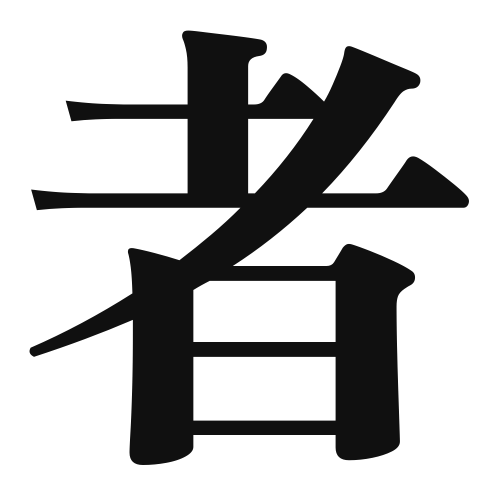1. Overview of Meaning
The kanji “者” (sha) generally means “person” or “individual.” It is often used to refer to someone who performs a specific action or belongs to a certain group.
2. Formation and Radical
Formation of the Kanji: The kanji “者” is a combination of the radical “者” (which represents a person) and the phonetic component “者,” which indicates its pronunciation. It is classified as a phonetic-ideographic character, where the meaning is derived from both its components.
Radical: The radical for “者” is “者” itself, which signifies a person or individual.
3. Examples of Usage
Common Words and Phrases: Some frequently used words that include “者” are:
- 学者 (gakusha) – scholar
- 患者 (kanja) – patient
- 著者 (chosha) – author
Example Sentences in Daily Conversation:
- 彼は優れた学者です。 (Kare wa sugureta gakusha desu.) – He is an excellent scholar.
- その患者はすぐに回復しました。 (Sono kanja wa sugu ni kaifuku shimashita.) – That patient recovered quickly.
4. Synonyms and Antonyms
Similar Kanji: A similar kanji is “人” (hito), which also means “person.” However, “人” is more general, while “者” often implies a specific role or characteristic.
Opposite Kanji: An antonym could be “無者” (mushya), which means “non-person” or “nobody,” indicating the absence of a person.
5. Cultural and Historical Background
Relation to Japanese Culture: The kanji “者” is commonly used in various contexts, including literature, academia, and everyday life, reflecting the importance of individuals in Japanese society.
Proverbs and Idioms: One common idiom is “者の道を行く” (sha no michi o iku), which means “to follow one’s own path,” emphasizing individuality and personal choice.
